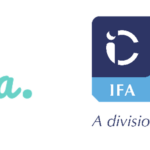By: Shaykh Dr Haitham Al-Haddad
The Islamic New Year has come upon us – but why do we still consider and follow this calendar when everything around us revolves around the Gregorian calendar?
The Hijrī calendar is not just any calendar, it is an extension of our Islamic faith and continuation of our Islamic heritage. The calendar marks one of the greatest incidents to have occurred in the history of Islam and even the world, serving as a turning point for Muslims and humanity as a whole; the Hijrah (Migration) of our beloved Prophet Muḥammad (ﷺ) from Makkah to Madīna. This momentous Hijrah laid down the foundation for an Islamic State that would eventually spread its beautiful and monotheistic message throughout most of the known world. In the centuries to follow, it would spread its civilisation, scientific and technological advancements, peaceful coexistence, tolerance and freedom for non-Muslims to practice their religion to countries that were still living in the Dark Ages. It presented itself and model of justice, equality and good governance for many other civilizations.
When ‘Umar ibn al-Khaṭṭāb became the Caliph of the Muslim Ummah, he consulted the senior Companions regarding having an official Islamic calendar for the Ummah. ‘Umar, a man with foresight and vision for the Ummah, understood that a calendar is a crucial identity marker of a nation. He refused to adopt the calendars of any other nation as that would further their civilisation, advancement and standing in the world. After many suggestions from the Companions, ‘Umar announced that the year in which the Prophet Muḥammad (ﷺ) migrated would mark the beginning of this new Islamic calendar. The calendar would begin with the month of Muḥarram and end with the month of Dhul-Ḥijjah.
Muḥarram is not only the 1st month of the Islamic Calendar which marks the New Islamic Year but also one of the four sanctified months of the year. As Allāh says in the Qur’ān:
“Indeed, the number of months with Allāh is twelve [lunar] months in the register of Allāh[from] the day He created the heavens and the earth; of these, four are sacred. That is the correct religion, so do not wrong yourselves during them. And fight against the disbelievers collectively as they fight against you collectively. And know that Allāhis with the righteous [who fear Him].” (Surah al-Tawbah, 9:36)
The Prophet (ﷺ) said, “Time has come back to its original state when
Allāh created the Heavens and the Earth; the year is twelve months, four of which are sacred. Three of them are in succession; Dhul-Qa‘dah, Dhul-Ḥijjah and al-Muḥarram, and (the fourth being) Rajab Mudar (named after the tribe of Mudar as they used to respect this month) which stands between Jumādā (al-Thanī) and Sha‘bān.” (Ṣaḥīḥ al-Bukhārī Ḥadīth No 7447)
The significance of the Islamic Calendar is evident by the fact that many Islamic rituals, obligations, acts of worship and even personal matters (marriage, divorce, age of majority, etc.) are connected to it. For example, the three pillars of Islam are based on the Hijrī Calendar; Fasting, Zakāh and Ḥajj. The age of majority (bulūgh) of a child, menstrual cycle of a woman, waiting period (‘Iddah) of a divorcee are calculated and determined based upon the Hijrī Calendar, whose months are based on lunar cycles, as opposed to solar or luni-solar. Allāh says in the Qur’ān: “They ask you, [O Muḥammad], about the crescent moons. Say, “They are measurements of time for the people and for ḥajj [pilgrimage]”.” (Surah al-Baqarah, 2:189).
It is for the above reasons that Muslims all over the world should use and promote the Islamic Calendar. The following are some practical examples and tips that can help the Muslims keep this importance Islamic heritage and faith alive:
- Always write the Hijrī date next to the Gregorian whenever possible.
- The Hijrī Calendar should be adopted in all Masjids, Islamic Centres, websites, newsletters etc.
- Islamic scholars, Du‘āt and speakers should use the Hijrī Calendar whenever possible.
- Buying and supporting digital watches, smartphone apps, etc. that have the Hijrī Calendar and using it in our houses so families can also get used to referring to it.
In conclusion, the revival, preservation and promotion of the Hijrī Calendar is one of the ways that the Muslims can protect their Islamic identity. In a world and a time where Muslims’ identity are threatened and conflicted, it behoves us to re-establish and hold up, proudly and confidently, the various signs of the religion and faith that will help the Muslims to stay strong, unique and steadfast upon the way of Islam.













